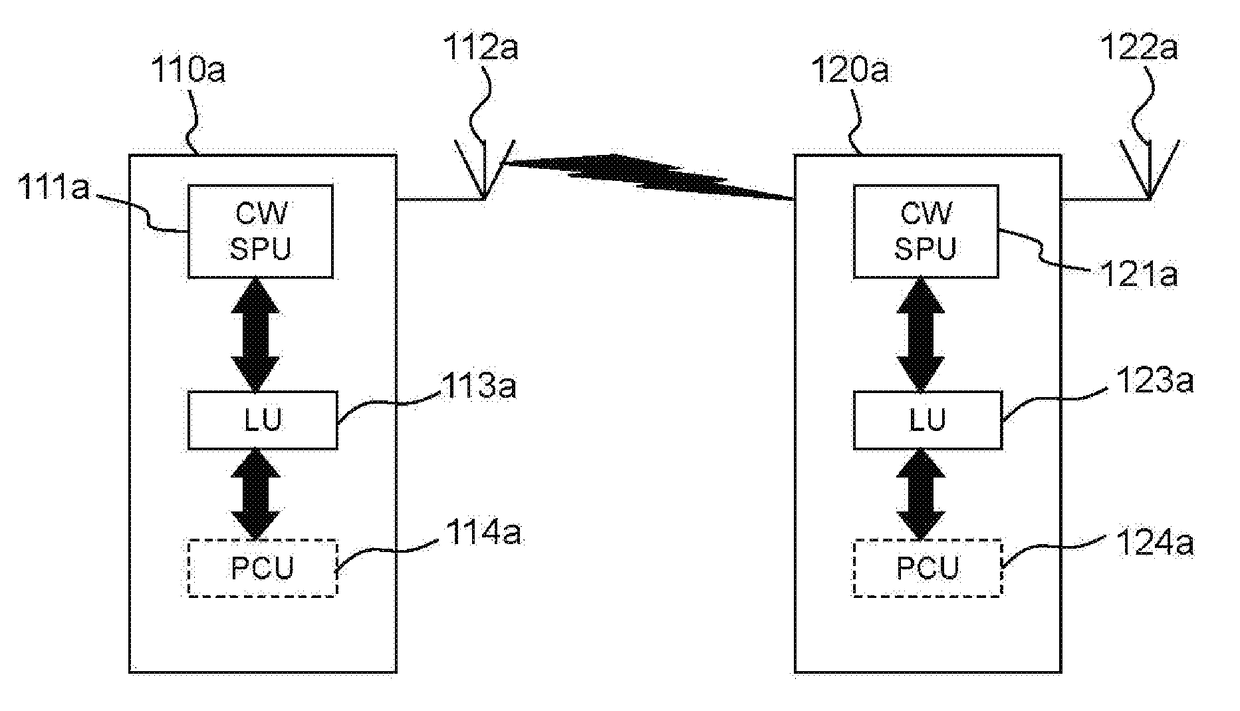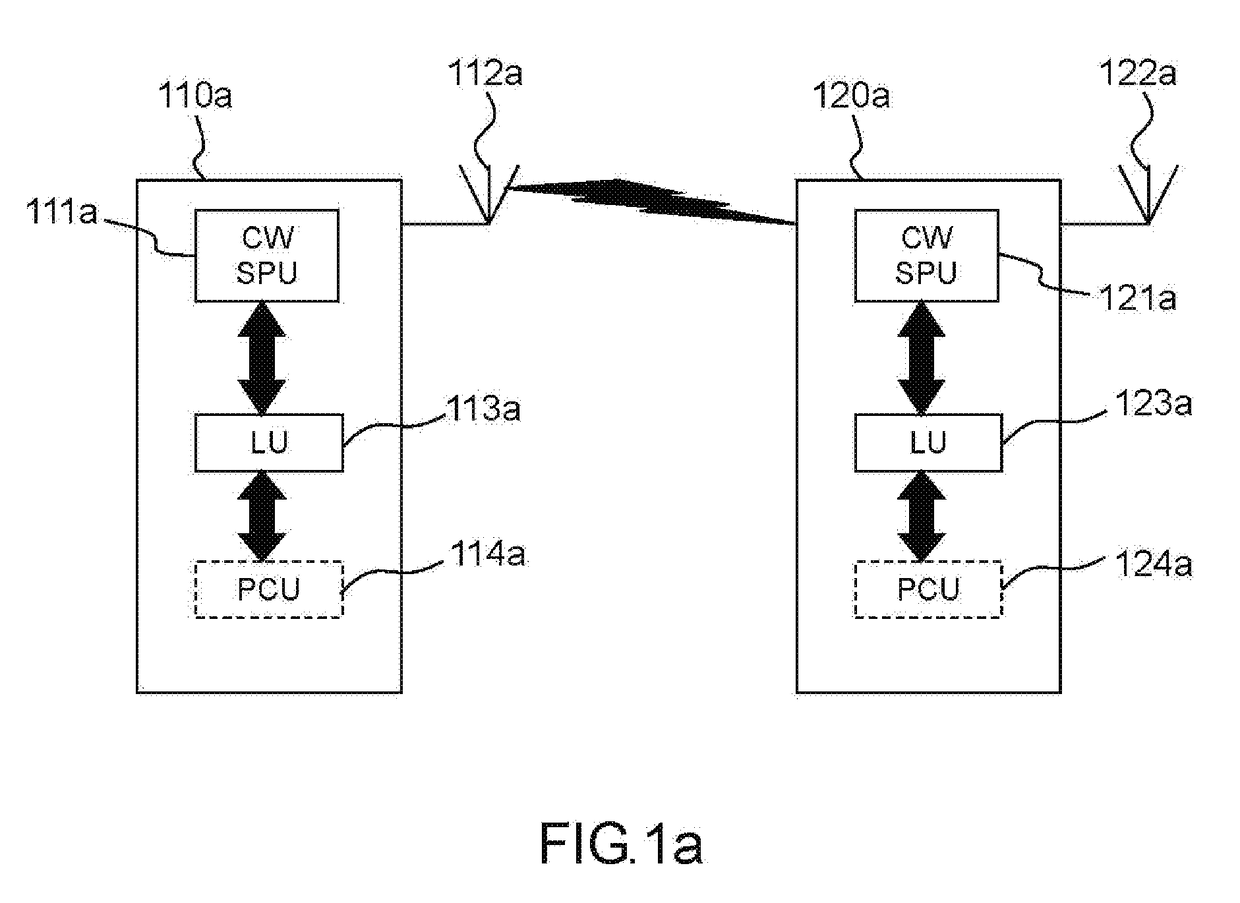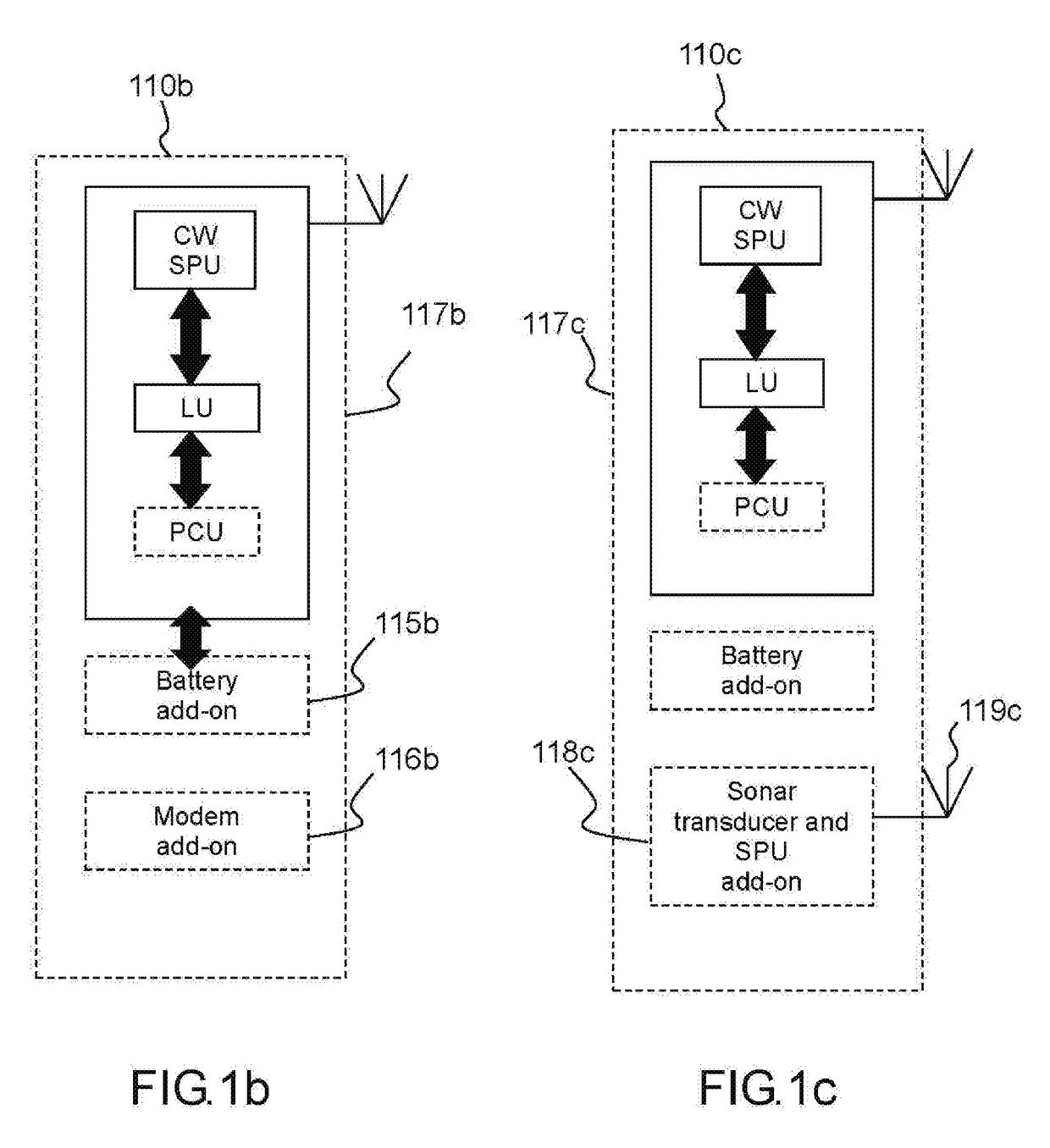Recovery assistance device, method and system
a technology of assistance device and victim, applied in the field of recovery assistance device, method and system for detecting and locating people, animals or objects/elements, can solve the problems of reducing the accuracy of the victim's location, requiring time and a large rescue team, and limited range and accuracy, so as to improve the accuracy of the victim's localisation, save precious minutes, and be convenient to implement.
- Summary
- Abstract
- Description
- Claims
- Application Information
AI Technical Summary
Benefits of technology
Problems solved by technology
Method used
Image
Examples
Embodiment Construction
[0038]FIGS. 1a, 1b and 1c represent schematic views of functional architectures of recovery assistance devices, according to some embodiments of the invention.
[0039]As illustrated on FIG. 1a, the invention is implemented using two carrier wave transmit / receive (T / R) devices, 110a, 120a. The devices may be identical or may be different. They have to be capable of communicating with one another, using a predetermined carrier wave. To this effect, they have, in particular, adequate antennas 112a, 122a. They also have carrier wave signal processing units, 111a, 121a.
[0040]The devices may use RF carrier waves or other types of carrier waves, for instance acoustic waves.
[0041]For use cases where the recovery assistance device will probably be used either under a snow avalanche or under rubble, the proper carrier wave may be RF. The frequency band commonly used by avalanche beacons is 457 kHz, as normalized by ETSI, or 869.8 MHz for a W-Link transmission used to transmit vital signals inf...
PUM
 Login to View More
Login to View More Abstract
Description
Claims
Application Information
 Login to View More
Login to View More - R&D
- Intellectual Property
- Life Sciences
- Materials
- Tech Scout
- Unparalleled Data Quality
- Higher Quality Content
- 60% Fewer Hallucinations
Browse by: Latest US Patents, China's latest patents, Technical Efficacy Thesaurus, Application Domain, Technology Topic, Popular Technical Reports.
© 2025 PatSnap. All rights reserved.Legal|Privacy policy|Modern Slavery Act Transparency Statement|Sitemap|About US| Contact US: help@patsnap.com



